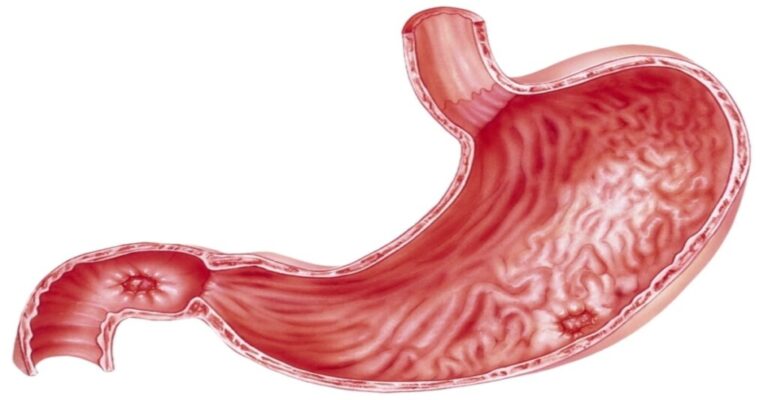Diabetes: Symptoms, Causes, and Treatment
Diabetes, often referred to by doctors as diabetes mellitus, describes a group of metabolic diseases in which the person has high blood glucose (blood sugar), either because insulin production is inadequate, or because the body’s cells do not respond properly to insulin, or both. Patients with high blood sugar will typically experience polyuria (frequent urination), they will become increasingly thirsty (polydipsia) and hungry (polyphagia).
Fast facts on diabetes
Here are some key points about diabetes. More detail and supporting information is in the main article.
Diabetes is a long-term condition that causes high blood sugar levels.
In 2013 it was estimated that over 382 million people throughout the world had diabetes (Williams textbook of endocrinology).
Type 1 Diabetes – the body does not produce insulin. Approximately 10% of all diabetes cases are type 1.
Type 2 Diabetes – the body does not produce enough insulin for proper function. Approximately 90% of all cases of diabetes worldwide are of this type.
Gestational Diabetes – this type affects females during pregnancy.
The most common diabetes symptoms include frequent urination, intense thirst and hunger, weight gain, unusual weight loss, fatigue, cuts and bruises that do not heal, male sexual dysfunction, numbness and tingling in hands and feet.
If you have Type 1 and follow a healthy eating plan, do adequate exercise, and take insulin, you can lead a normal life.
Type 2 patients need to eat healthily, be physically active, and test their blood glucose. They may also need to take oral medication, and/or insulin to control blood glucose levels.
CLICK HERE TO ORDER FOR MAX 3-5-7
As the risk of cardiovascular disease is much higher for a diabetic, it is crucial that blood pressure and cholesterol levels are monitored regularly.
As smoking might have a serious effect on cardiovascular health, diabetics should stop smoking.
Hypoglycemia – low blood glucose – can have a bad effect on the patient. Hyperglycemia – when blood glucose is too high – can also have a bad effect on the patient.
How to determine whether you have diabetes, prediabetes or neither
Doctors can determine whether a patient has a normal metabolism, prediabetes or diabetes in one of three different ways – there are three possible tests:
The A1C test
- At least 6.5% means diabetes
- Less than 100 mg/dl means normal
- An abnormal reading following the FPG means the patient has impaired fasting glucose (IFG)
The FPG (fasting plasma glucose) test
- at least 126 mg/dl means diabetes
- between 100 mg/dl and 125.99 mg/dl means prediabetes
- less than 5.7% means normal
The OGTT (oral glucose tolerance test)
- at least 200 mg/dl means diabetes
- between 140 and 199.9 mg/dl means prediabetes
- less than 140 mg/dl means normal
Controlling Diabetes – treatment is effective and important
All types of diabetes are treatable.:
Diabetes type 1 lasts a lifetime, there is no known cure. Type 2 usually lasts a lifetime; however, some people have managed to get rid of their symptoms without medication, through a combination of exercise, diet and body weight control.
Researchers from the Mayo Clinic Arizona in Scottsdale showed that gastric bypass surgery can reverse type 2 diabetes in a high proportion of patients. They added that within three to five years the disease recurs in approximately 21% of them. Yessica Ramos, MD., said “The recurrence rate was mainly influenced by a longstanding history of Type 2 diabetes before the surgery.
This suggests that early surgical intervention in the obese, diabetic population will improve the durability of remission of Type 2 diabetes.” (Link to article) Patients with type 1 are treated with regular insulin injections, as well as a special diet and exercise.
Patients with Type 2 diabetes are usually treated with tablets, exercise and a special diet, but sometimes insulin injections are also required.
If diabetes is not adequately controlled the patient has a significantly higher risk of developing complications.
Complications linked to badly controlled diabetes:
Below is a list of possible complications that can be caused by badly controlled diabetes:
Eye complications – glaucoma, cataracts, diabetic retinopathy, and some others
Foot complications – neuropathy, ulcers, and sometimes gangrene which may require that the foot be amputated
Skin complications – people with diabetes are more susceptible to skin infections and skin disorders
Heart problems – such as ischemic heart disease, when the blood supply to the heart muscle is diminished
Hypertension – common in people with diabetes, which can raise the risk of kidney disease, eye problems, heart attack and stroke
Mental health – uncontrolled diabetes raises the risk of suffering from depression, anxiety and some other mental disorders
Hearing loss – diabetes patients have a higher risk of developing hearing problems
Gum disease – there is a much higher prevalence of gum disease among diabetes patients
Stroke – diabetes patients have a higher risk of developing hearing problems
Erectile dysfunction – impotence.
Infections – people with badly controlled diabetes are much more susceptible to infections
Healing of wounds – cuts and lesions take much longer to heal
Some facts and myths about diabetes
Many presumed “facts” are thrown about in the paper press, magazines and on the internet regarding diabetes; some of them are, in fact, myths. It is important that people with diabetes, pre-diabetes, their loved ones, employers and schools have an accurate picture of the disease. Below are some diabetes myths:
People with diabetes should not exercise – NOT TRUE!! Exercise is important for people with diabetes, as it is for everybody else. Exercise helps manage body weight, improves cardiovascular health, improves mood, helps blood sugar control, and relieves stress. Patients should discuss exercise with their doctor first.
Fat people always develop type 2 diabetes eventually – this is not true. Being overweight or obese raises the risk of becoming diabetic, they are risk factors, but do not mean that an obese person will definitely become diabetic. Many people with type 2 diabetes were never overweight. The majority of overweight people do not develop type 2 diabetes.
Diabetes is a nuisance, but not serious – two thirds of diabetes patients die prematurely from stroke or heart disease. The life expectancy of a person with diabetes is from five to ten years shorter than other people. Diabetes is a serious disease.
Children can outgrow diabetes – this is not true. Nearly all children with diabetes have type 1; insulin-producing beta cells in the pancreas have been destroyed. These never come back. Children with type 1 diabetes will need to take insulin for the rest of their lives, unless a cure is found one day.
Don’t eat too much sugar, you will become diabetic – this is not true. A person with diabetes type 1 developed the disease because their immune system destroyed the insulin-producing beta cells. A diet high in calories, which can make people overweight/obese, raises the risk of developing type 2 diabetes, especially if there is a history of this disease in the family.
Diabetes diets are different from other people’s – the diet doctors and specialized nutritionists recommend for diabetes patients are healthy ones; healthy for everybody, including people without the disease. Meals should contain plenty of vegetables, fruit, whole grains, and they should be low in salt and sugar, and saturated or trans-fat. Experts say that there is no need to buy special diabetic foods because they offer no special benefit, compared to the healthy things we can buy in most shops.
High blood sugar levels are fine for some, while for others they are a sign of diabetes – high blood-sugar levels are never normal for anybody. Some illnesses, mental stress and steroids can cause temporary hikes in blood sugar levels in people without diabetes. Anybody with higher-than-normal blood sugar levels or sugar in their urine should be checked for diabetes by a health care professional.
Diabetics cannot eat bread, potatoes or pasta – people with diabetes can eat starchy foods. However, they must keep an eye on the size of the portions. Whole grain starchy foods are better, as is the case for people without diabetes.
One person can transmit diabetes to another person – NOT TRUE. Just like a broken leg is not infectious or contagious. A parent may pass on, through their genes to their offspring, a higher susceptibility to developing the disease.
Only older people develop type 2 diabetes – things are changing. A growing number of children and teenagers are developing type 2 diabetes. Experts say that this is linked to the explosion in childhood obesity rates, poor diet, and physical inactivity.
I have to go on insulin, this must mean my diabetes is severe -people take insulin when diet alone or diet with oral or non-insulin injectable diabetes drugs do not provide good-enough diabetes control, that’s all. Insulin helps diabetes control. It does not usually have anything to do with the severity of the disease.
If you have diabetes, you cannot eat chocolates or sweets – people with diabetes can eat chocolates and sweets if they combine them with exercise or eat them as part of a healthy meal.
Diabetes patients are more susceptible to colds and illnesses in general – a person with diabetes with good diabetes control is no more likely to become ill with a cold or something else than other people. However, when a diabetic catches a cold, their diabetes becomes harder to control, so they have a higher risk of complications.
According to recent medical research findings, one thing that is common to most diabetic patients is that they have low levels of glutathione
Apart from food, water and oxygen, Glutathione is the next essential molecule that you need to stay alive and healthy, yet only very few people know about it.
Medical scientists describe it as the body’s master antioxidant and the ultimate cell protector.
Riboceine, found in cellgevity helps to deliver cysteine, an amino acid, through the cellular wall which forces the cell to produce higher levels of glutathione.
So, if you are a diabetic or you know of someone who is suffering from diabetes, I strongly encourage and recommend Cellgevity.
Glutathione works alongside with other antioxidants and can’t function effectively in isolation of other antioxidants.
Adding Max 357 to your Cellgevity provides the body with more Antioxidants for better health.
The more Antioxidants you have the healthier you are.






